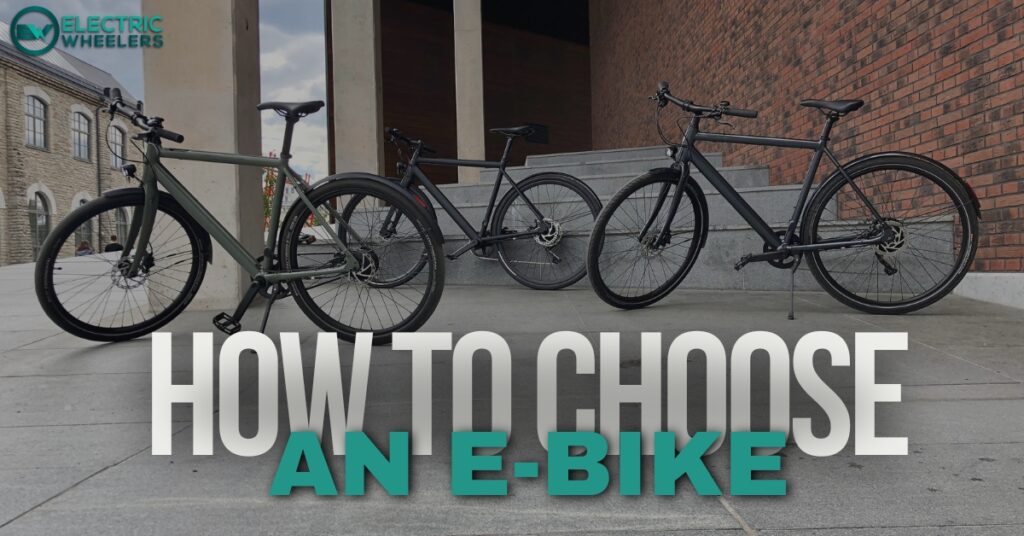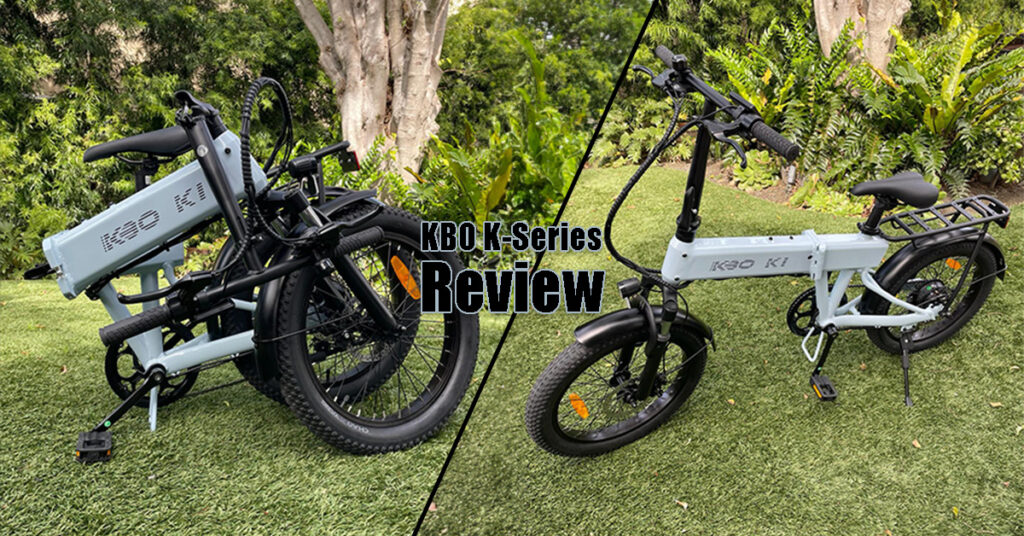Electric bikes allow you to ride through traffic efficiently and they are an environmentally friendly mode of transportation.
Even though they are so similar to a regular bike, buying an e-bike can be quite a headache. You have to choose between different motors, understand different battery configurations, etc.
I have had dozens of e-bikes on my own and each of them is meant for different occasions and works somewhat differently.
I’ll show you which e-bikes are available in the first place, which situations each of them is suitable for, and help you figure out what features your electric bike should have.
Figure out what you are using the bike for
There are so many different types of electric bikes. First of all, you must pick a bike that fits your needs precisely. Think of it like that: if you need a family car, you can’t have a two-seater sports car. Well, you can but then you need another car for your family.
The same logic is with electric bikes. If you want to only ride on city streets, you won’t need a mountain bike with knobby tires. So your first job is to figure out, what type of e-bike you need.
Here is a look at the most common electric bikes available today.
Commuter E-Bikes

These are low-maintenance bikes specifically manufactured for urban transportation and daily commuting. They are usually lightweight, comfortable, efficient, and practical.
Most commuter e-bikes have a top speed of around 20-28 mph. The range really depends on the model but you can expect at least 20 miles from cheaper models. More expensive models will have 50+ miles of range.
Folding Electric Bikes
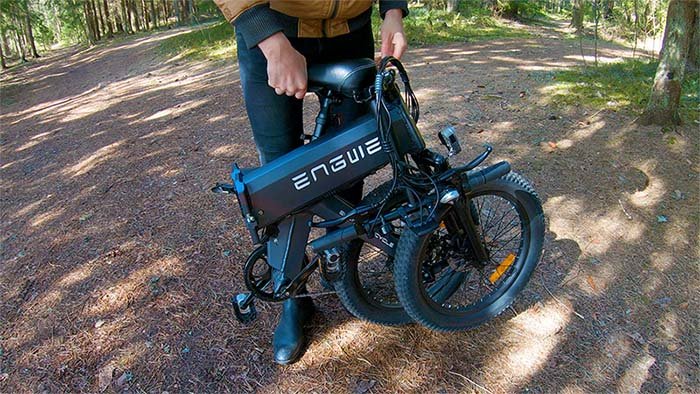
Folding electric bikes are e-bikes designed for limited storage space at work or home. They can be easily folded into a compact size. They are a convenient alternative for riders who want a bike for short to medium-distance trips.
Apart from living in an apartment, folded bikes are also the best choice for people living in RVs and tiny houses.
So a number one selling point for these bikes is compactness. I have had several folding bikes and I can say the ride quality is not bad either. But for very long commutes, I’d rather choose something else.
Electric Mountain Bikes

E-mountain bikes are bikes designed for off-road riding on rugged terrain. Ideally, they provide assistance to climb steep inclines or maneuver rough terrain.
E-MTBs have high-powered motors, wider tires, sturdy frames, and dual suspension systems. These bikes are very versatile. You can easily ride them in urban environments too. But e-MTBs tend to be quite pricey.
Fat Tire E-Bikes
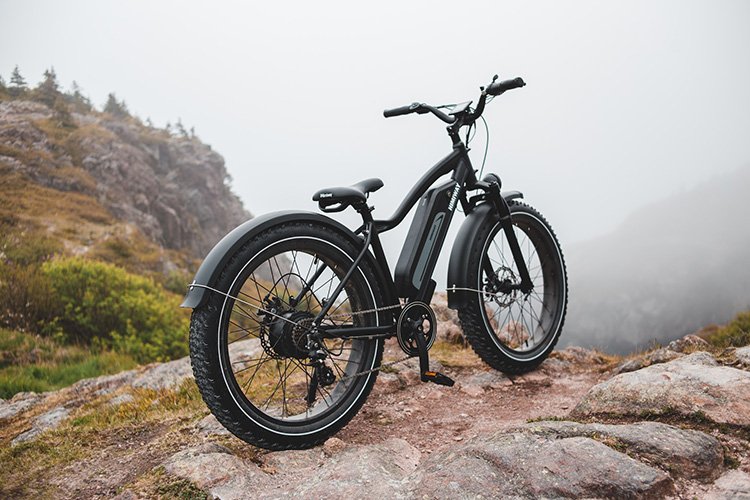
These are e-bikes designed to provide additional traction and stability on loose or slippery terrains like mud, snow, or sand.
Typically, the tires are about 4 inches wide, and the powerful electric motors assist a rider when pedaling. Fat tire e-bikes are hybrid bikes that work well for off-roading, as well as commuting, touring, or exploring rugged/uneven terrain.
Cargo Electric Bikes
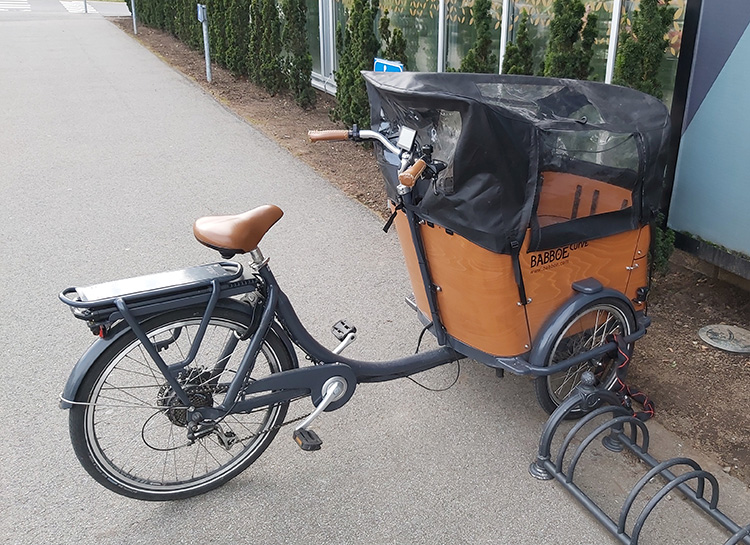
Also known as e-cargo bikes, are bikes designed with cargo-carrying accessories to handle heavy loads.
The frame, rack, and baskets should be durable enough to withstand heavy loads and manage large cargo capacities. Some durable brands can handle over 400 pounds or more.
Other Types of e-Bikes
To be honest, the list of different types of electric bikes can go on for quite a long time. However, we have mentioned the most common types.
For the sake of truth, we can name a few more:
- electric road bikes
- electric touring bikes
- electric gravel bikes
- electric cruiser bikes
- electric trikes
The main point here is to figure out what type of electric bike you need. After that, you can evaluate and compare different e-bike features and other factors.
Main Features to Consider When Choosing an Electric Bike
Now, let’s go through the main components of electric bikes and what to look for when choosing an e-bike.
Battery and Range
E-bike batteries have different capacities and ranges. So, it’s important to understand how long you intend to ride so that you can choose the appropriate bike.
Ordinarily, most bike batteries range between 200Wh and 1,000Wh. Higher watt-hour batteries provide more range.
An electric bike’s range (on a single charge) can vary from around 20 miles (for some smaller commuter bikes) to over 100 miles (for some high-end electric road bikes). A 20-30 mile range might be sufficient for commuting or short trips, while 50 miles or more may be necessary for longer rides like bikepacking or other adventures.
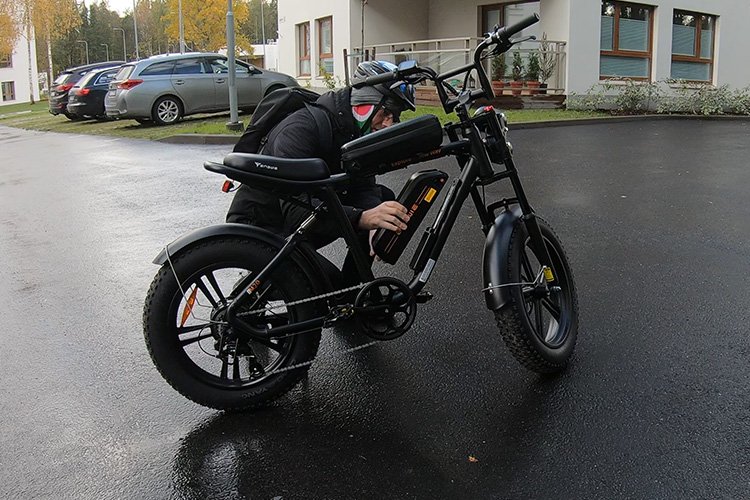
Another aspect you should think about is whether the battery should be built-in or removable. I like leaving my bike in the ground floor storage room and taking the battery with me for recharging.
However, ebikes with built-in batteries look so sleek, that you won’t even know it’s electric. For example this Ampler e-bike. It looks like a regular bicycle.
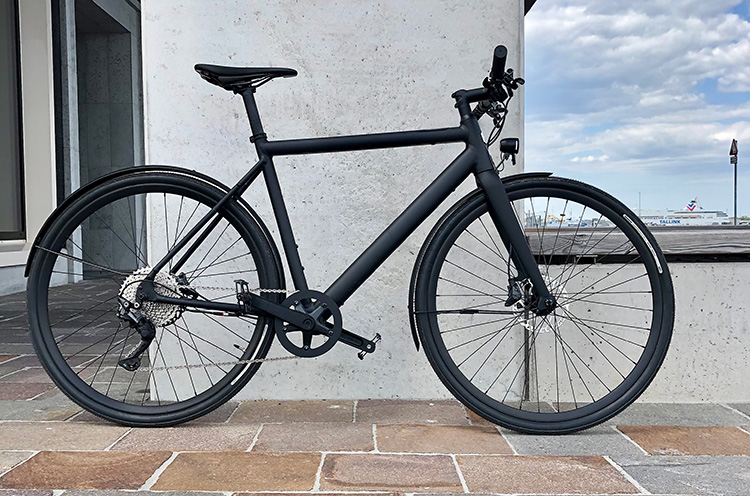
Motor Placement and Power
Most electric bike motors range between 250 and 750 watts. However, some high-performance models can have up to 1,000 watts or more.
The motor can mostly be in two different positions on the bike: the rear hub or in the bottom bracket. (There are some models with front hub motors but they are really rare.)
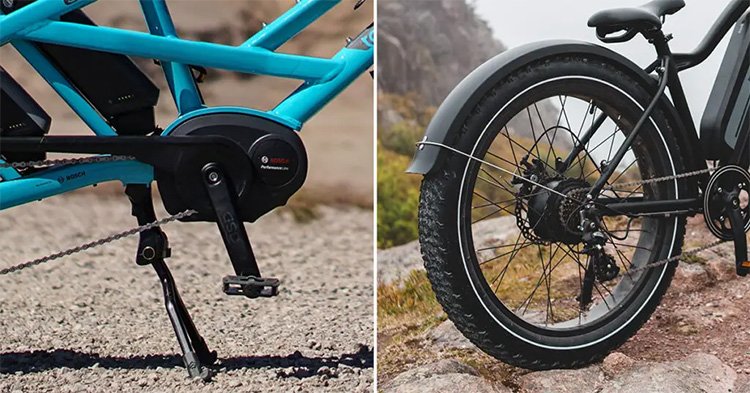
Rear hub motors are more common on more affordable e-bikes, while the mid-drive motors are more sophisticated and therefore more expensive.
In most cases, rear hub motors are a bit more powerful and accelerations are more aggressive. On the other hand, mid-drive motors provide a more natural ride experience.
Torque Sensor or Cadence Sensor
All electric bikes have pedal assistance. When you pedal, one of these sensors tells the motor how much assistance is needed.
In short, the cadence sensor is like a switch. If you start pedaling, the switch turns on and activates the motor. The torque sensor is more sophisticated. It measures how hard you pedal and tells the motor how much power is needed.
The ride experience with a torque sensor is more natural. However, with the cadence sensor, the acceleration can be more aggressive and it’s easier to get the full potential of the motor.
Torque sensors are more common on expensive electric bikes. You almost never see a torque sensor on an e-bike that costs less than $1,000.
Read more about the differences between cadence and torque sensors from the dedicated article.
Pedal Assistance vs Throttle On Demand
As stated before, every e-bike has pedal assistance. It means if you start pedaling, the motor starts to work and makes pedaling easier.
However, there are electric bikes that also have a throttle. It means, that you can ride your e-bike without pedaling. If this feature is important to you, make sure to opt for an e-bike that has a throttle.
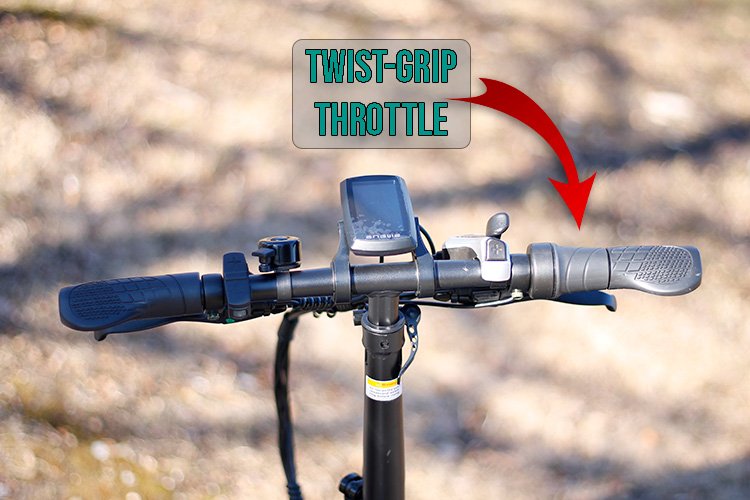
In my opinion, a throttle is a cool feature. Sometimes when the headwind is so strong, it is so convenient to just engage the throttle and ride like a moped.
On the other hand, if you want to get more physical exercise rather than just get easily from A to B, then you probably don’t need a throttle.
Frame Type
Choosing an electric bike’s frame type isn’t any different than choosing it for a traditional bike. The frame style affects the bike’s geometry, comfort, and handling.
The most common frame styles are step-through and step-over. There is no better or worse. it’s generally a matter of personal preference.
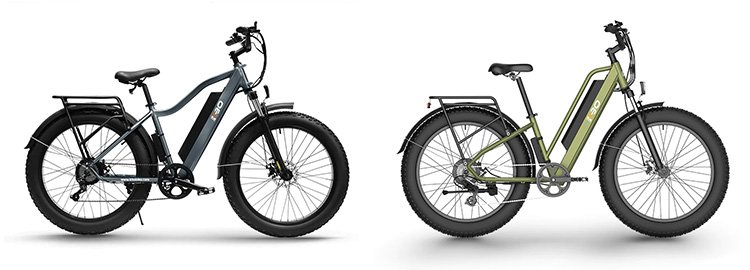
A step-through frame provides a lower standover height that makes it easier to get on and off the bike. This kind of frame provides a more relaxed and upright ride position. Also, step-through e-bikes may be more suitable for seniors.
A step-over frame, on the other hand, is a sturdy and rigid traditional bike frame with a high-top tube sloping down towards the seat tube. Step-over bikes are usually with more aggressive riding positions.
Additionally, it’s important to check what’s the weight limit of the e-bike. You should choose a bike that can easily withstand you and all your cargo.
Braking System
Electric bikes usually have three types of brakes: Rim, mechanical disc, and hydraulic brakes.

Rim brakes are cheaper and often installed in entry-level bikes. Unfortunately, they are not effective in wet conditions.
Disc brakes are more powerful brake systems with a metal rotor fixed to the wheel hub and a caliper to grip the rotor and slow down or stop the bike.
Formerly, disc brakes were common in high-performance bikes. But now, even cheap electric bikes come with disc brakes.
There are 2 types of disc brakes – mechanical and hydraulic.
Hydraulic disc brakes are more powerful and need less hand strength to operate. But they are more expensive. E-bikes with hydraulic disc brakes tend to be more expensive and you rarely see them on cheap e-bikes.
Mechanical disc brakes are cheaper. Most electric bikes that cost under $1,500 come with mechanical disc brakes. These brakes are not as effective as hydraulic discs, but if they are well-adjusted, they will stop the bike with no problems.
Suspension System
Just like traditional bicycles, some have suspensions and some don’t. Whether you need them or not depends on the type of terrain you are riding.
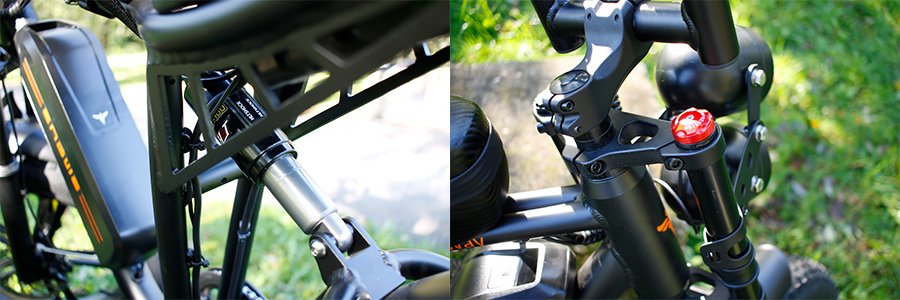
Front suspensions are mostly on commuter electric bikes and city bikes. The front suspension fork provides shock absorption when riding over the curbs or other occasional bumps.
Full suspensions or dual suspensions are common systems on electric mountain bikes. They help in absorbing impact and maintaining traction on rough trails.
Rigid electric bikes have no suspension system. They only rely on the tires and frame to absorb impact. These bikes are well-suited for smooth roads or bike paths.
E-Bike Gearing System
E-bikes often use the same gearing system as traditional bicycles. But in my opinion, the gearing system on an e-bike plays a less important role.
When going uphill with a traditional bike, you definitely want to switch to a lower gear. But with an e-bike, the motor is already helping so the specific gear is not so important.
When choosing an e-bike, consider the following for its gearing system:
- Urban Commuting: Hub gears for low maintenance and frequent stop-starts.
- Hilly Terrains: Derailleur gears for a wider range and hill-climbing efficiency.
- Simple Rides: Single-speed for flat terrains and minimal maintenance.
Read our dedicated article for a more detailed overview of e-bike gearing systems.
Wheels and Tires
The most common wheel diameters are 26-inch, 27.5-inch, or 29-inch. Also, 20-inch wheels on electric folding bikes are common.
Generally, larger wheels offer better stability and smoothness while smaller wheels are more maneuverable and easier to handle.
The tire width also varies, depending on the terrain. Narrower tires are designed for smooth terrain, while wide tires are ideal for off-road terrain.
The tread pattern varies depending on the type of bike and can affect the riding experience. Smooth tires are found on electric road bikes or commuter bikes, while knobby tires are on electric mountain bikes.
In this blog post, we have written about e-bike wheels in more detail.
Additional Features
You should check a few extra features like brake lights or fenders to make your riding experience more comfortable. Here are the most common things to check.
- Portability – consider the bike’s weight and portability. A lightweight e-bike is easier to carry on stairs. Folding bike is easier to transport, or store in a small apartment/office.
- Fenders – A bike with front and rear wheel fenders will protect you from water splashes, or other debris kicked up by the tires.
- Lights – Consider bikes with bright built-in headlights and taillights for safety when riding in low-light conditions. Also, it would be best if the bike has an additional light reflective strip or spoke lights.
- Racks and bag mounts – Racks and bag mounts provide additional storage space.
Other Factors to Consider
Okay, we have already covered everything that relates to the e-bike itself. But there are some other factors involved, you might want to think about.
Budget
E-bikes are available at different prices. You can get an electric bike for $700 and you can also spend over $5,000. In both ways, you will get an e-bike but their level of components are just very different.
Consider how much you are willing to spend, so you can set some expectations on your future bike.
For example, if you have $1,000 to spend, you can already expect that your e-bike will probably have a rear hub motor with mechanical disc brakes and an estimated range would be 20-30 miles.
On the other hand, if want a more advanced electric bike and are willing to spend let’s say $3,000 you can get something with a mid-drive motor, torque sensor, hydraulic brakes, high-end gearing system, and a longer range.
It was really rough estimation but I think you will get the idea.
Compliance with the Law
Some areas have laws and regulations on the bike’s top speed and motor power. In some states, it is illegal to ride an e-bike with more than a 750W motor.
As a rider, it is essential to research the laws and regulations in your area before purchasing an e-bike. Ensuring you have the precise bike will prevent fines and other legal issues.
Since the regulation is different in different regions, I will not go into more depth about this topic. But you can read our in-depth State-by-State Electric Bike Laws in the USA for more knowledge.
Warranty of the E-Bike
A warranty covers a bike’s defects and malfunctions. However, warranties vary depending on the manufacturer. Most warranties range from one to three years, with high-end brands having even longer.
Well-known brands offer more extensive coverage. So, thoroughly check the warranty’s duration and what it covers before buying the bike.
The brand of the bike may also play a pivotal role. If you buy a bike of an unknown brand, you will never know if it still exists when you need customer support.
On the other hand, if you buy an e-bike from a trusted brand, they will help you with your problems and can provide spare parts if needed.
Read also: Best Electric Bikes Made in the USA
Final Thoughts
Okay, we have finally come to an end. I know it’s a lot of information to digest. But if you have gotten this far, you probably understand, the process of choosing an electric bike is actually very straightforward and logical.
You just need to know what you need and what is available. If you know that, the rest is easy.
You can bookmark this page and come back later to remind you of some steps.
If this article helped you to make a purchase decision I would be happy if you shared with us what e-bike did you choose.
Happy riding!

The founder and the editor-in-chief of the Electric Wheelers blog. With a previous background in IT, sales, and video editing, he has now established himself as a micromobility expert.
He bought his first e-scooter over 5 years ago and since then has owned dozens of e-scooters and e-bikes. His deep understanding of the technical aspects, coupled with a keen eye for market trends, enables him to provide insightful and reliable content.
His commitment to promoting sustainable and efficient urban mobility solutions has made him a respected voice in the community of eco-friendly transportation enthusiasts.

